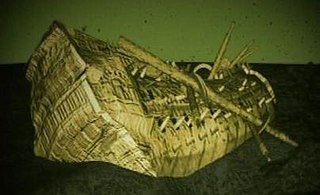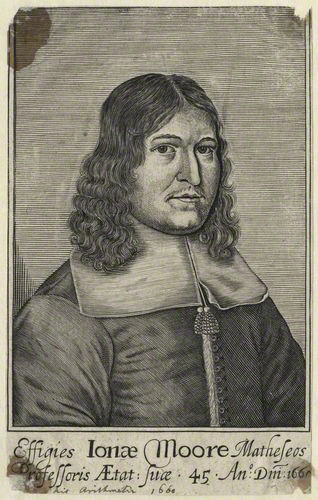
Samuel Pepys was an English diarist and naval administrator. He served as administrator of the Royal Navy and Member of Parliament and is most famous for the diary he kept for a decade. Pepys had no maritime experience, but he rose to be the Chief Secretary to the Admiralty under both King Charles II and King James II through patronage, diligence, and his talent for administration. His influence and reforms at the Admiralty were important in the early professionalisation of the Royal Navy.

Christ's College is a constituent college of the University of Cambridge. The college includes the Master, the Fellows of the College, and about 450 undergraduate and 170 graduate students. The college was founded by William Byngham in 1437 as God's House. In 1505, the college was granted a new royal charter, was given a substantial endowment by Lady Margaret Beaufort, and changed its name to Christ's College, becoming the twelfth of the Cambridge colleges to be founded in its current form. Alumni of the college include some of Cambridge University's most famous members, including Charles Darwin and John Milton.

Christ's Hospital is a public school with a royal charter located to the south of Horsham in West Sussex. The school was founded in 1552 and received its first royal charter in 1553. Since its establishment, Christ's Hospital has been a charity school, with a core aim to offer children from humble backgrounds the chance of a better education.

Eleanor Gwyn was an English stage actress and celebrity figure of the Restoration period. Praised by Samuel Pepys for her comic performances as one of the first actresses on the English stage, she became best known for being a long-time mistress of King Charles II of England.

Pall Mall is a street in the St James's area of the City of Westminster, Central London. It connects St James's Street to Trafalgar Square and is a section of the regional A4 road. The street's name is derived from pall-mall, a ball game played there during the 17th century, which in turn is derived from the Italian pallamaglio, literally "ball-mallet".

Christ Church Burial Ground in Philadelphia is an important early-American cemetery. It is the final resting place of Benjamin Franklin and his wife, Deborah. Four other signers of the Declaration of Independence are buried here, Benjamin Rush, Francis Hopkinson, Joseph Hewes, and George Ross. Two additional signers of the Declaration of Independence, James Wilson and Robert Morris, are buried at Christ Church just a few blocks away.

King Edward's Witley is a private co-educational boarding and day school, founded in 1553 by King Edward VI and Nicholas Ridley, Bishop of London and Westminster. The School is located in the village of Wormley, Surrey, England, having moved to its present location in 1867. The School became fully co-educational in 1952. As of September 2010, the school has joined the small number of independent schools in the UK which offer the IB Diploma Programme in place of A-Levels in the sixth form. The school re-introduced A-levels as part of the curriculum from September 2015.

Mary "Moll" Davis, also spelt Davies or Davys, was a courtesan and mistress of King Charles II of England. She was an actress and entertainer before and during her role as royal mistress.

The Sick and Hurt Commissioners were responsible for medical services in the Royal Navy. They were a separate body to the Navy Board, supplying surgeons to naval ships, providing them with medicines and equipment, and running shore and ship hospitals; they were also responsible for prisoners of war.

Sir Anthony Deane, FRS was an English shipwright and politician who sat in the English House of Commons and served as mayor of Harwich.

London was a 76-gun second-rate ship of the line in the Navy of the Commonwealth of England, originally built at Chatham Dockyard by shipwright John Taylor, and launched in June 1656. She gained fame as one of the ships that escorted Charles II from Holland back to England during the English Restoration, carrying Charles' younger brother James Duke of York, and commanded by Captain John Lawson.

Sir Jonas Moore, FRS (1617–1679) was an English mathematician, surveyor, ordnance officer, and patron of astronomy. He took part in two of the most ambitious English civil engineering projects of the 17th century: draining the Great Level of the Fens and building the Mole at Tangier. In later life, his wealth and influence as Surveyor-General of the Ordnance enabled him to become a patron and driving force behind the establishment of the Royal Observatory, Greenwich.

Sir Richard Levett was an English merchant, politician and slave trader who served as Lord Mayor of London in 1699. Born in Ashwell, Rutland, he subsequently moved to London and established a pioneering mercantile career, becoming involved with the Bank of England and the East India Company. Levett was acquainted with many prominent individuals during his time in London, among them Samuel Pepys, John Houblon, William Gore, Sir John Holt, Robert Hooke, and Charles Eyre. He acquired several properties in Kew and Cripplegate before dying in 1711.

Sir Norman Moore, 1st Baronet, FRCP was a British doctor and historian, best known for his work with the Royal College of Physicians and his writings on history of medicine. Born in Higher Broughton, Salford, Lancashire, the only child of abolitionist and social reformer Rebecca Moore, née Fisher, of Limerick and the noted Irish political economist Robert Ross Rowan Moore, Moore worked in a cotton mill before studying natural sciences in Cambridge and then going on to study comparative anatomy at St Bartholomew's Hospital.

J. D. (David) Davies is a British historian, specialising primarily in naval history, and the author of both fiction and non-fiction books.

The Samuel Pepys Club is a London club founded in 1903 to do honour to the memory of Samuel Pepys (1633–1703), the English naval administrator and Member of Parliament now best known as a diarist.
John Robertson (1712–1776) was an English mathematician, and a Fellow, clerk and librarian of the Royal Society. His book The Elements of Navigation became a classic textbook.

The Surveyor of Marine Victuals later known as the General-Surveyor of Victuals was a civilian officer in the Royal Navy who was a former member of the Navy Board from 1550 until 1679, he was responsible for managing the supply of food, beverages and other provisions for the Royal Navy the office was replaced by the Victualling Board in 1683. The General-Surveyor was based at the Navy Office
Nerida Fay Ellerton is an Australian mathematics educator and historian of mathematics. She is professor of mathematics education at Illinois State University. As well as studying the present state of mathematics education, she and her husband McKenzie A. (Ken) Clements have researched the history of mathematics education, in the process discovering school worksheets in the Harvard Library that are among the oldest known writings of Abraham Lincoln.
Isaac Newton University Lodge No 859 is a Masonic Lodge based at the University of Cambridge for matriculated members of the university. As of 2013 there were approximately 200 members. This is about half the 397 subscribing members in 1955. The lodge meets at Bateman Street Masonic Hall, with the lodge's badge or standard a combination of Isaac Newton's coat of arms and the University of Cambridge's coat of arms. The lodge is also a member of the Association of Medical, university, and Legal Lodges.
















